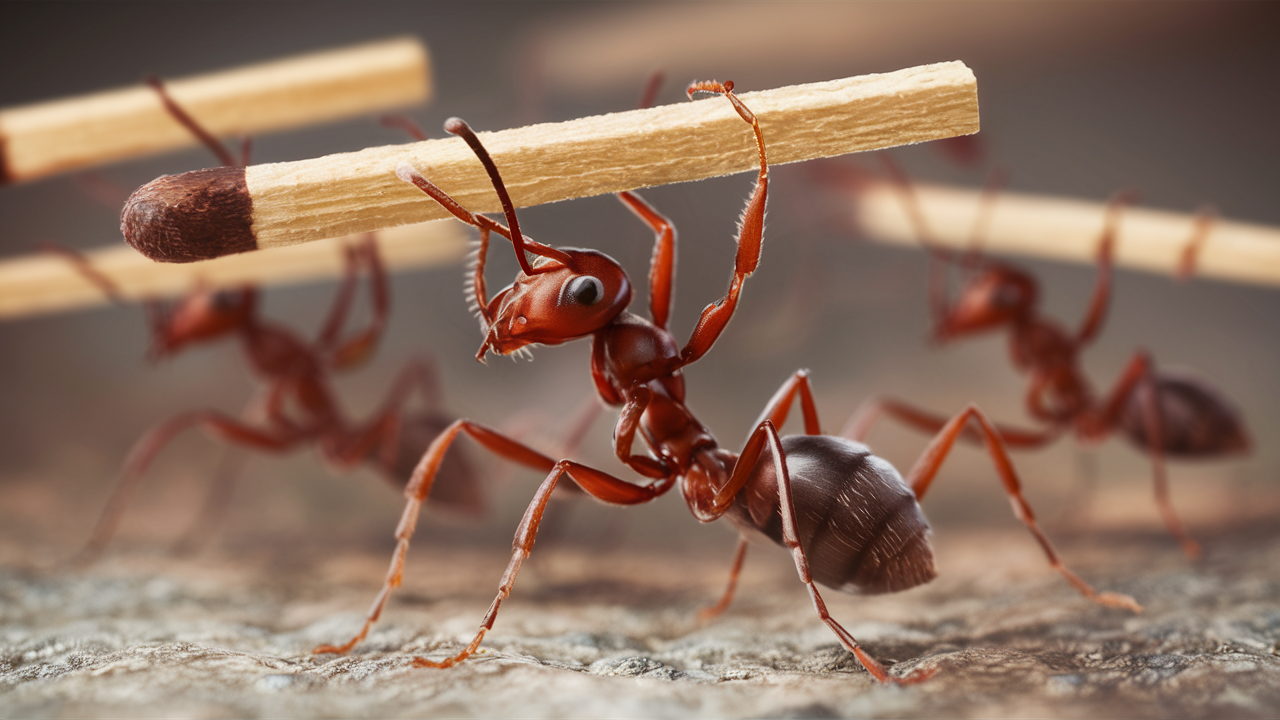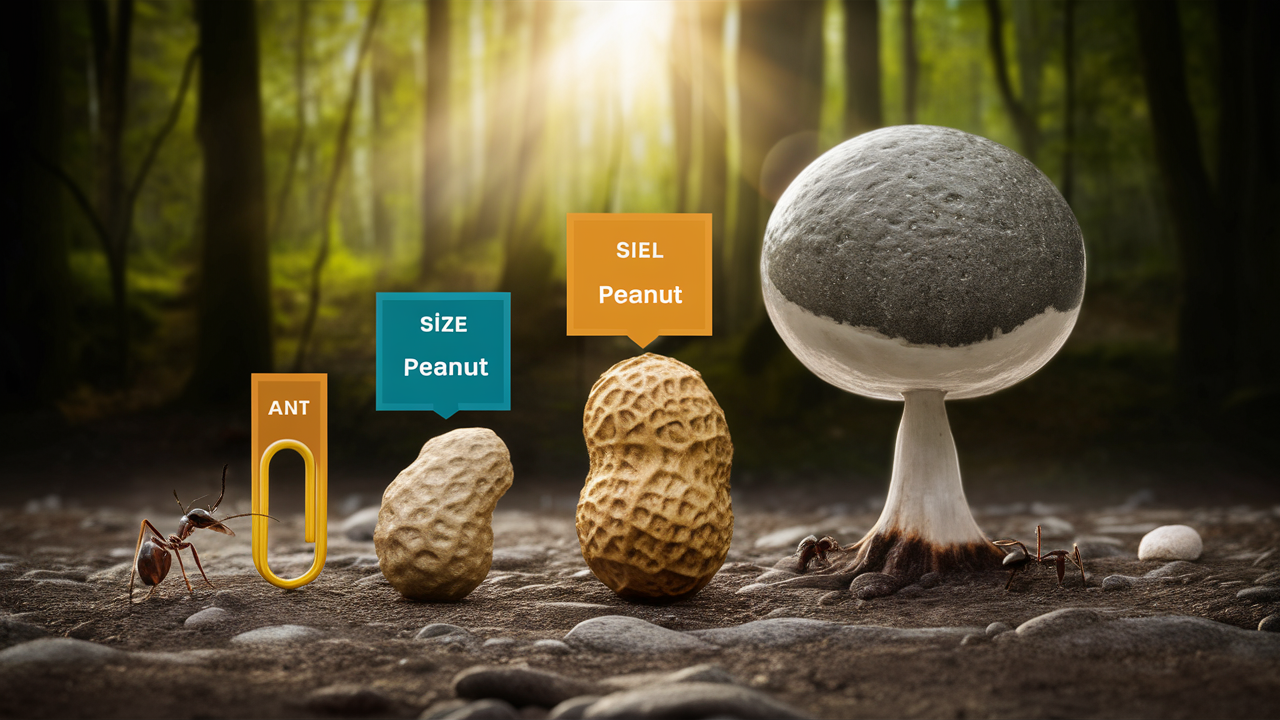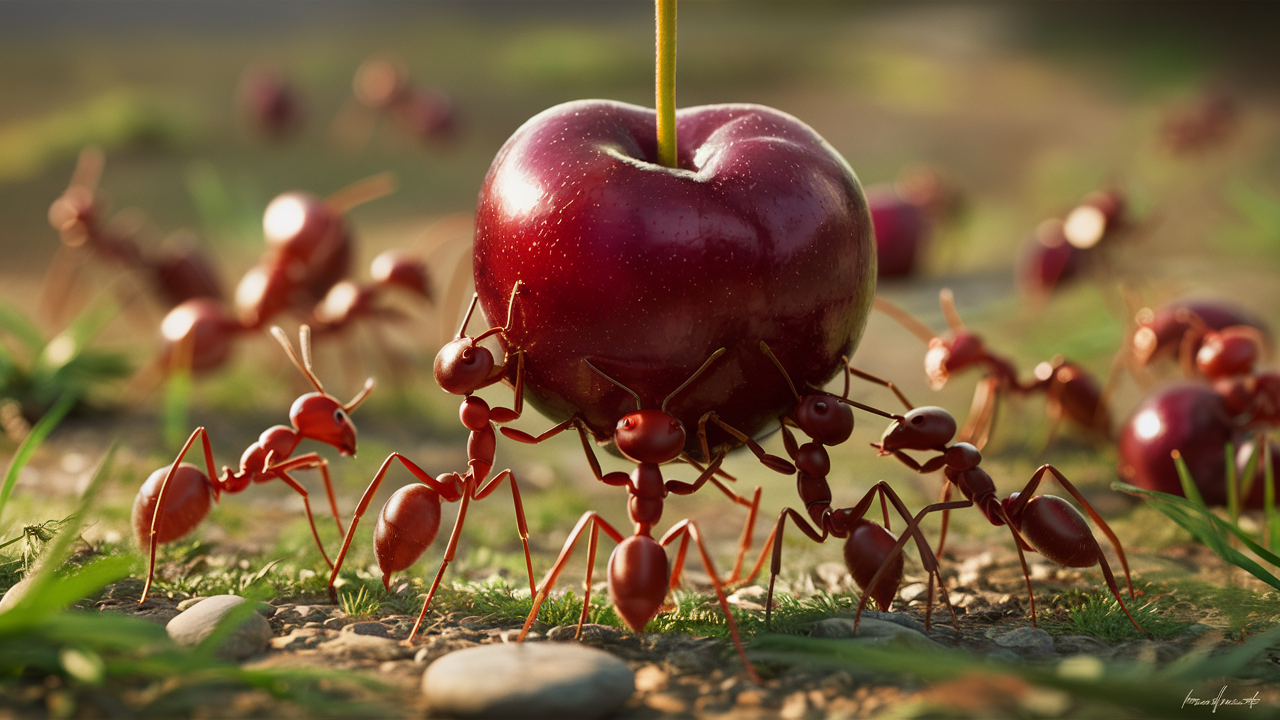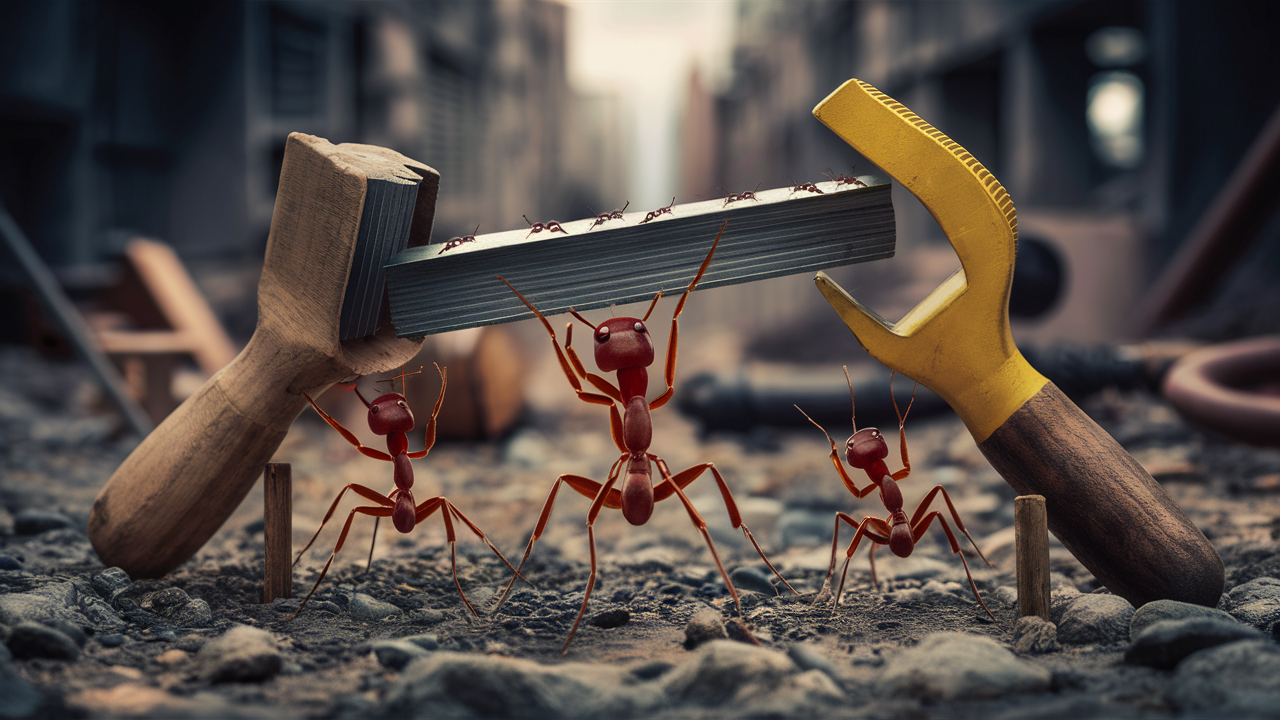Introduction
Understanding the remarkable lifting capabilities of ants offers intriguing insights into both the physical and evolutionary attributes of these tiny creatures. The inquiry into how much can an ant lift reveals answers that not only highlight their impressive strength but also their efficiency in adapting to their environments. Ants are known to lift objects that are 10–50 times their weight, demonstrating not just sheer power but a refined adaptation to their ecological roles.
The biological foundation of an ant’s ability to manage such heavy loads lies in their specialized anatomical structures. Ants can lift and transport substantial weights due to the strong neck muscles and effective anchor points on their exoskeleton, which significantly enhance their lifting capacity. This extraordinary ability is an evolutionary advantage that enables ants to carry more weight than seems feasible, supporting their survival and dominance in various habitats. Exploring these capabilities not only broadens our understanding but also drives advancements in technology and deepens our appreciation of nature’s complexities.
Key Takeaways
- Ants can lift objects up to 50 times their own body weight, showcasing not just physical strength but also evolutionary adaptations to their ecological roles.
- The strength of ants is underpinned by their anatomical structures, including strong neck muscles and anchor points on their exoskeleton, enhancing their lifting capacity.
- Compared to other insects, ants have a unique advantage in biomechanics that supports their ability to thrive and construct complex social structures.
- The leafcutter ant is a prime example of remarkable strength among ants, capable of lifting items about 50 times its own body weight.
- The collective effort of ant colonies demonstrates their ability to undertake tasks that individual ants could not, emphasizing the importance of teamwork.
- Research into ants’ lifting abilities has inspired innovations in robotics and materials science, leading to technologies that mimic these natural feats.
The Surprising Ability of Ants to Lift
Ants have an astonishing capacity to handle weights far exceeding their own body mass. This capability isn’t just about brute strength; it hinges significantly on their structural adaptations. The intricate design of an ant’s exoskeleton combined with their mighty mandibles equips them to efficiently transport heavy objects across distances.
Key Insights into the Surprising Ability of Ants to Lift
1. Exceptional Strength-to-Size Ratio Ants display a remarkable strength-to-size ratio, allowing them to lift objects up to 50 times their own body weight. This impressive capability stems from their unique physiological traits, such as a larger muscle cross-sectional area relative to their size, which significantly boosts their power output compared to larger animals.
2. Exoskeleton Efficiency The ant’s exoskeleton, made of a tough material called chitin, not only provides protection but also supports considerable weights. This exoskeleton functions effectively as a mechanical lever, enhancing the ant’s ability to manage heavy loads with greater efficiency.
3. Metabolic and Muscular Advantages Ants benefit from a high metabolic rate and densely packed muscle fibers, which are crucial for their demanding physical activities. These attributes allow ants to produce energy quickly and maintain their strength, which is vital for lifting and carrying substantial weights over distances.
4. Teamwork and Collective Strength While individual ants are strong, their real power shines when they work together. This collective effort enables them to move objects much larger than any single ant could handle alone, illustrating not just physical strength but also advanced cooperation and communication skills within the colony.
These points illustrate not just the physical capabilities of ants but also the intricate blend of biological and mechanical factors that enable these small creatures to perform such formidable feats of strength. These insights can also inspire technological and engineering innovations, particularly in robotics and materials science, where mimicking ant strength and efficiency could lead to significant advancements.
The Mechanics Behind Ant Lifting
Ants utilize their exoskeleton as a mechanical lever, allowing them to undertake the impressive feat of lifting objects that are multiple times their own weight. This is made possible through the ant’s maximum strength and structural design which optimizes force against gravity. The coordination of their body segments and muscles specifically supports their capability to manipulate extremely heavy loads relative to their size.
Comparison with Other Insects
When compared to other insects, ants are exceptional for their ability to carry objects up to 50 times their body weight. This comparative advantage is crucial in understanding the biomechanics that make ants not just survivors, but thriving architects of the insect world. Their capacity to lift and transport objects is not only a display of physical prowess but also a critical evolutionary adaptation that supports their complex social structures and survival strategies.
How Much Can a Single Ant Lift?
Individual ants are not just small creatures scurrying on the ground; they possess the extraordinary ability to move objects thousands of times their own mass. This phenomenal strength is largely due to their optimized body size and highly specialized muscle structure. Such capabilities allow these tiny insects to perform feats that are, relative to their size, arguably unmatched in the animal kingdom.
Record-Holding Species
Among various ant species, the leafcutter ant stands out for its remarkable strength. Known for its role in cutting and transporting foliage, this species can lift items about 50 times its own body weight. This ability not only highlights the leafcutter’s impressive strength but also its importance in ecosystem engineering and nutrient cycling.
Factors Affecting Lifting Capacity
The lifting capacity of ants is influenced by several factors, including the specific species, their physical condition, and the environmental circumstances they face. Each species has adapted uniquely, with some capable of lifting and carrying weights that are extraordinarily heavy compared to their own body mass. These adaptations help them survive and thrive in varied and often harsh environments.
Collective Lifting: When Ants Work Together
The collective power of ant colonies is not just about strength but involves sophisticated mechanisms that allow them to lift weights many times their own body weight. This communal effort is crucial for tasks such as transporting heavy objects back to their nests, which are essential for the colony’s sustenance and expansion. By harnessing the power of teamwork, ants can carry large items collectively that would be unmanageable on an individual basis.
Teamwork Among Ants
In ant colonies, teamwork is not an option but a necessity. Worker ants are known to synchronize their efforts, enhancing their capability to move massive loads, sometimes up to 50 times their own weight. This incredible feat of carrying loads significantly heavier than themselves showcases not only their physical strength but also their collective power, which is vital for their survival.
The Role of Ant Colony Structure
The effectiveness of collective lifting in ants heavily relies on the structural organization of the colony. The division of labor within the colony allows different ants to specialize in various roles, such as lifting and carrying, which significantly increases the colony’s efficiency in handling objects many times heavier compared to their size. Furthermore, their ability to communicate and coordinate provides a seamless execution of tasks that involve heavy lifting and transportation of building materials to construct intricate underground tunnels.
Real-World Applications of Ants’ Lifting Capabilities
Understanding how ants, capable of carrying objects much heavier than themselves, have inspired significant advancements in robotics and materials science. By mimicking the ants’ ability to lift substantial weights relative to their body size, engineers have developed new technologies that enhance efficiency and functionality. These innovations are pivotal in creating machines that replicate the ants’ impressive strength and coordination.
Innovations Inspired by Ants
The study of how ants lift and carry loads has directly influenced the design of new robots that can handle weights many times their own body weight. These robots are designed to mimic the ant’s lifting abilities, utilizing structures that allow them to carry much heavier loads efficiently. This is particularly important in industries where the ability to move large, heavy items is crucial, demonstrating the practical applications of understanding ant strength.
Ants in Popular Culture
Ants are often portrayed in media as epitomes of strength and tenacity, capable of carrying several times their weight. This depiction not only entertains but also educates audiences about the remarkable strength of these small insects, inspiring us with their ability to tackle tasks that are much larger than themselves. Through these portrayals, ants have become a symbol of what can be achieved with perseverance and teamwork, even by the smallest creatures.
“Recently, Harvard researchers took inspiration from ants to design a team of relatively simple robots that can work collectively to perform complex tasks using only a few basic parameters.” – Leah Burrows (Harvard SEAS)
The Mystery of Ants’ Strength: Explained
The extraordinary lifting capabilities of ants arise not only from their physical attributes but also from evolutionary enhancements that maximize their efficiency. These small insects can manage weights substantially greater than their own, a capability rooted deeply in specific anatomical adaptations. This ability allows ants to perform feats of strength that are impressive relative to their small size.
Biological Basis of Ants’ Strength
Ants are equipped with specialized neck muscles and crucial anchor points in their exoskeleton that together facilitate their remarkable lifting power. These adaptations enable ants to lift and carry weights that are many times heavier than their body mass. The structure of an ant’s body, particularly the exoskeleton, acts as a natural lever, making it possible for them to handle objects much heavier than themselves, which is essential for their survival and day-to-day activities.
Evolutionary Advantages
The strength of ants has evolved to support their survival, allowing them to build intricate underground tunnels and transport critical resources across distances. This ability to lift and carry substantial weights is vital for maintaining their colonies and supporting the large communities within. Through these evolutionary advancements, ants have been able to thrive in diverse and challenging environments, showcasing a strength that is both necessary and remarkable for their size.
[lasso rel=”amazon-76″ id=”2201″]
Conclusion
In conclusion, the investigation into how much can an ant lift not only highlights the impressive strength of these tiny creatures but also their exceptional adaptability to environmental challenges. Ants are capable of lifting objects 10–50 times their weight, demonstrating an extraordinary combination of strength, efficiency, and evolutionary sophistication. This capability underscores the unique biomechanics that enable ants to flourish across diverse habitats, undertaking tasks critical for their survival and the broader ecosystem.
The biological basis of ants’ lifting ability, from their strong neck muscles to the anchor points on their exoskeleton, is crucial in their capacity to handle such heavy loads. Studying ants not only expands our understanding of natural complexities but also inspires advancements in technology. In robotics and materials science, the principles underlying ant strength are applied to create systems that can lift and transport substantial weights.













